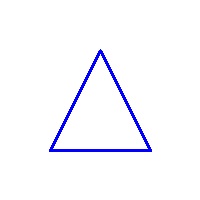A new book which is receiving a lot of attention, An Immense World – How Animal Senses Reveal the Hidden Realms Around Us by Ed Yong, focuses on the concept of Umwelt. This is a German term which means literally “environment” but which the German zoologist Jakob von Uexküll used more specifically to refer to an animal’s perceptual world. He applied this term in his research in 1909 which revealed that every animal exists in its own unique perceptual world…its own sliver of reality. Remarkably, some of these unique perceptual worlds gain access into regions of the manifested world that are closed to humanity, such as birds’ and bees’ ability to detect Earth’s magnetic field, or a herd of elephants’ communication with each other through sounds too low for a human ear to register much less interpret.
Umwelt defines the multiple realities of the range of consciousness expressing through life on Earth—realities which remain essential mysteries to humanity. The writer Henry Beston expressed, in his book The Outermost House, the mystery of the impenetrable worlds in which animals live and the futility of humans’ assumption that animals are essentially unconscious creatures, or mere automatons created by evolution for humans’ usage. “They are not brethren”, Beston wrote. “They are not underlings; they are other nations, caught with ourselves in the net of life and time, fellow prisoners of the splendour and travail of the earth.”
The insights of both of these writers evoke within us awe, reverence, and—yes—humility if we have assumed that humanity is the zenith of the evolutionary thrust. It is not; but it is the intermediary, the messenger between the higher and lower worlds, and this entails great responsibility. Both writers provide important insights into the relationship of the human to the animal kingdom, revealing a developing sensitivity of perception to the essential mystery of consciousness as expressed in the animal kingdom. Perhaps this growing insight into the non-human worlds can be viewed as a step forward in humanity’s role in the divine Plan, which the writings of Alice Bailey tell us is, in part, “to assume progressive control of the subhuman kingdoms and to relate them to each other”, Understandably, this statement might sound an alarm in thoughtful human minds all too aware of the harm caused by human beings over the millennia to the “subhuman” or “lower” kingdoms, leading to the disruption of the planet’s ecosystems and today’s environmental crisis. However, the key difference is “to relate them to each other”. While Umwelt defines each animal species’ unique field of perception—the “bat world” or a “frog’s reality”—the unique state of human consciousness is its capacity not only to recognize a distinctive self, but to grasp the relationship of that self to all other selves, and beyond, to conceive of its absolute, essential unity with all beings, above and below the stage of self, from the level of an atom to a Deity. Humanity has the potential to imagine, if not enter into, other realms of being. The spiritual goal of human experience is to achieve awareness that consciousness spans myriad worlds and includes them all.
One of the most startling statements made in Alice Bailey’s writings is that every living being or manifested life either has been, is, or will be human. “The fact of humanity and of that for which humanity stands is probably the primary and major aspect of the divine purpose”, we’re told. Everything subhuman is slowly moving towards human experience or is passing through the phase of human effort and consequent experience, or has moved beyond that phase of limitation yet retains the results, the lessons, of experiencing the human condition. Why this should be so is beyond our present understanding; we are only told that humanity “is the basis, the goal and the essential inner structure of all being. Humanity itself is the key to all evolutionary processes and to all correct understanding of the divine Plan, expressing in time and space the divine Purpose”, Alice Bailey wrote.
This makes clear that humanity is not the goal, the acme, of evolution on our planet but rather the messenger at the intermediary stage. Perhaps this role is related to the human potential to develop increasing sensitivity, not in the emotional sense but in the mind’s receptivity to impression. “An informed imaginative leap” is required, psychologist Alexandra Horowitz says, to cross the divide between our human umwelt and another animal’s. The creative imagination may be humanity’s highest endowment, for esoteric teaching says that none of the lower kingdoms have that capacity. Animals can and do suffer physically and sentiently, but man also suffers mentally, which can express in memory, remorse, anxiety, dread, and in the imagination’s power to visualize that which lies beyond present attainment.
The fruits of human suffering can generate empathy, the ability to imagine the suffering of another life and to seek its amelioration. However, as long as one equates the self with the material, personal form and regards the self as a unique and separate entity from all others, an accurate perception of reality is impossible. The whole thrust of the spiritual path is to awaken the sense of awareness and the consciousness which is responsive to the life within all forms and to the whole. When these are developed, as they are not in the subhuman kingdoms, humanity can become the intermediary between the vast range of lives which share the Earth. Imagination is the most important means we have for envisioning the divine Plan for our world and all its inhabitants, and the regular practice of meditation is a vital method for expanding our ability to imagine other worlds, both above and below the human stage.

